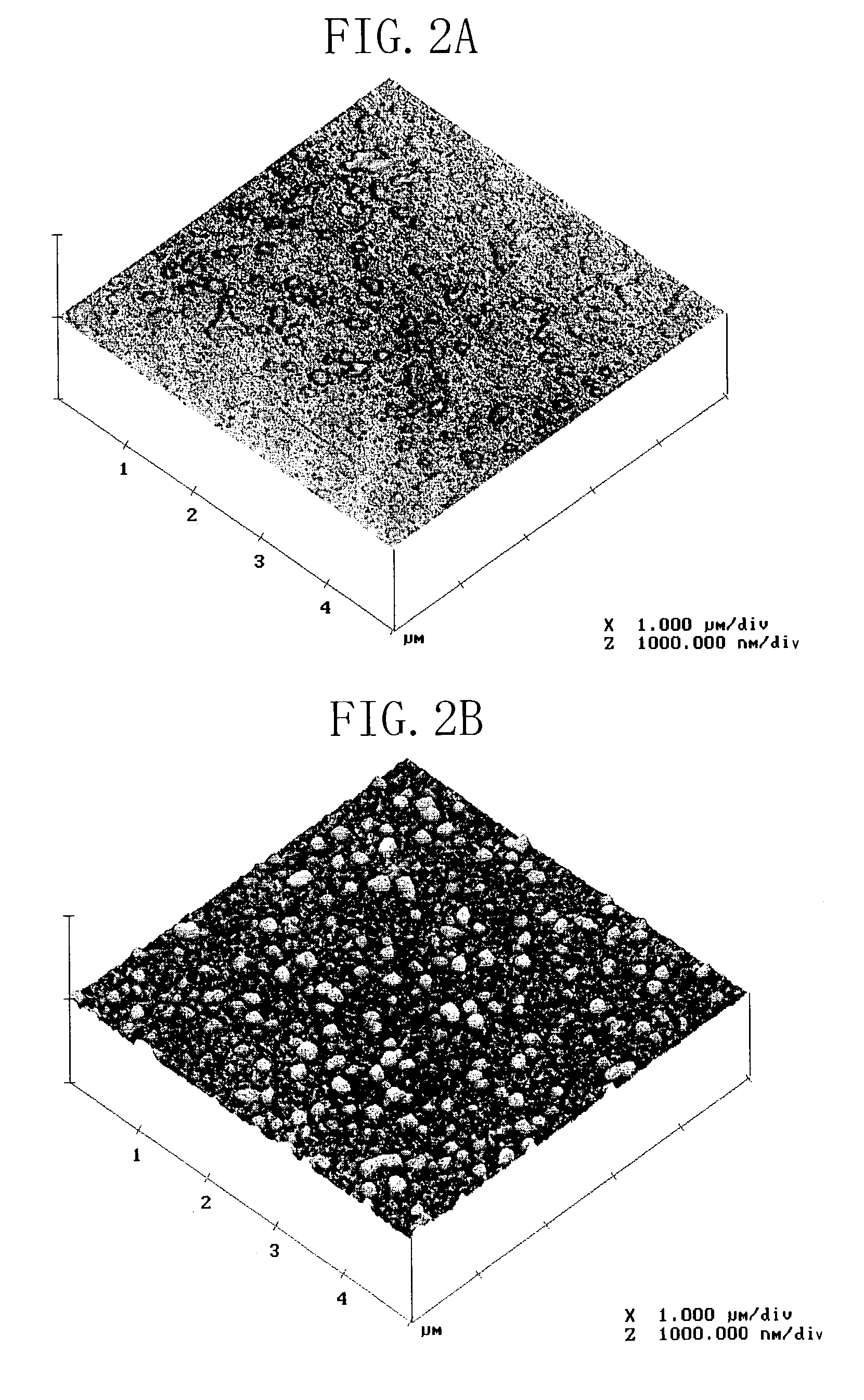Method for manufacturing semiconductor thin film
- Summary
- Abstract
- Description
- Claims
- Application Information
AI Technical Summary
Benefits of technology
Problems solved by technology
Method used
Image
Examples
first embodiment
[0116]The first embodiment of the present invention will now be described with reference to the drawings.
[0117]FIG. 1A to FIG. 1C are cross-sectional views sequentially illustrating steps in a method for manufacturing a semiconductor thin film according to the first embodiment of the present invention.
[0118]As illustrated in FIG. 1A, first, a first semiconductor layer 12A made of gallium nitride (GaN) and having a thickness of about 1 μm is grown on the principal surface of a sapphire (single-crystal Al2O3) substrate 11 by a metal organic chemical vapor deposition (MOCVD) method, for example, using trimethylgallium (TMGa) as a group III source and ammonia (NH3) as a nitrogen source. Herein, a so-called a low-temperature buffer layer may be provided between the substrate 11 and the first semiconductor layer 12A for relieving the lattice mismatch between the substrate 11 and the nitride semiconductor grown on the substrate 11. For example, the low-temperature buffer layer is made of a...
second embodiment
[0134]The second embodiment of the present invention will now be described with reference to the drawings.
[0135]FIG. 4A to FIG. 4D and FIG. 5A and FIG. 5B are cross-sectional views sequentially illustrating steps in a method for manufacturing a semiconductor thin film according to the second embodiment of the present invention.
[0136]First, as illustrated in FIG. 4A, the first semiconductor layer 12A made of gallium nitride and having a thickness of about 1 μm is grown on the principal surface of the substrate 11 made of sapphire by an MOCVD method using trimethylgallium as a group III source and ammonia as a nitrogen source. Again, a low-temperature buffer layer may be provided between the substrate 11 and the first semiconductor layer 12A.
[0137]Then, a mask-forming film made of silicon and having a thickness of about 100 nm is deposited on the first semiconductor layer 12A by, for example, a CVD method in which monosilane is decomposed. Then, a resist pattern having a planar stripe...
third embodiment
[0150]The third embodiment of the present invention will now be described with reference to the drawings.
[0151]FIG. 6A to FIG. 6E are cross-sectional views sequentially illustrating steps in a method for manufacturing a semiconductor thin film according to the third embodiment of the present invention.
[0152]First, as illustrated in FIG. 6A, the first semiconductor layer 12A made of gallium nitride and having a thickness of about 1 μm is grown on the principal surface of the substrate 11 made of sapphire by an MOCVD method using trimethylgallium as a group III source and ammonia as a nitrogen source. Again, a low-temperature buffer layer may be provided between the substrate 11 and the first semiconductor layer 12A.
[0153]Then, a mask-forming film made of silicon and having a thickness of about 100 nm is deposited on the first semiconductor layer 12A by, for example, a CVD method in which monosilane is decomposed. Then, a resist pattern having a planar stripe pattern (not shown), for ...
PUM
 Login to View More
Login to View More Abstract
Description
Claims
Application Information
 Login to View More
Login to View More - R&D
- Intellectual Property
- Life Sciences
- Materials
- Tech Scout
- Unparalleled Data Quality
- Higher Quality Content
- 60% Fewer Hallucinations
Browse by: Latest US Patents, China's latest patents, Technical Efficacy Thesaurus, Application Domain, Technology Topic, Popular Technical Reports.
© 2025 PatSnap. All rights reserved.Legal|Privacy policy|Modern Slavery Act Transparency Statement|Sitemap|About US| Contact US: help@patsnap.com



